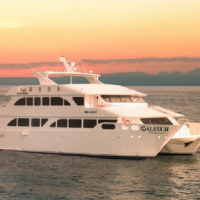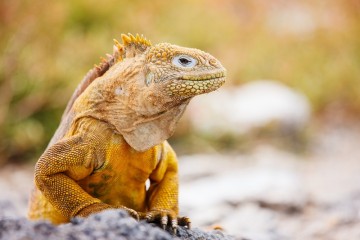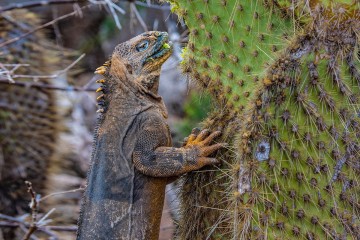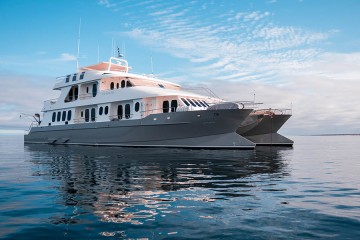Galapagos: EcoGalaxy | Western Route 6 days
Tour Overview
Explore the Western Islands of the Galapagos on this 6 day itinerary onboard the EcoGalaxy Catamaran.
The pristine archipelago of the Galapagos superimposes the notion of uniqueness. As you cruise through the carious islands you notice each one is different than the last. From the bright red sand shores of Rabida island to the volcanic craters of Egas Port. The Galapagos is a unique place shaped throughout the ages. This is a truly unique destination, sure to shape your perspective of precious ecosystems and natural beauty in the same way.
The EcoGalaxy is a luxury and start-of-the-art cruise ship that is built to optimise the generation of energy, the consumption of freshwater and the reduction of carbon emissions. The ship offers 8 double cabins: 4 located on the upper deck and 4 on the main deck; all cabins have either twin beds or a king bed. The physical capacity of the cruise is 18 passengers providing space to accommodate single passengers and tour leaders, creating a very personalised onboard experience. Snorkel Gear, Kayaks and paddleboards are included in your cruise.
Viva's Best Bits...
Learn about the unique wildlife living in the Galapagos Islands, where giant tortoises roam, blue-footed boobies dance, and marine iguanas dive into crystal waters—nature’s most extraordinary laboratory.
Cutting-edge technology powers a smarter journey—maximizing energy efficiency, conserving freshwater, and reducing carbon emissions—so you can explore the Galapagos with a lighter footprint and a bold spirit.
Complete your Galapagos Island experience in comfortable, luxurious cabins with panoramic windows aboard the EcoGalaxy—where every view is a front-row seat to the wild beauty of the archipelago.



